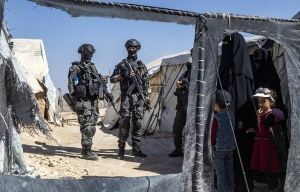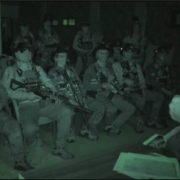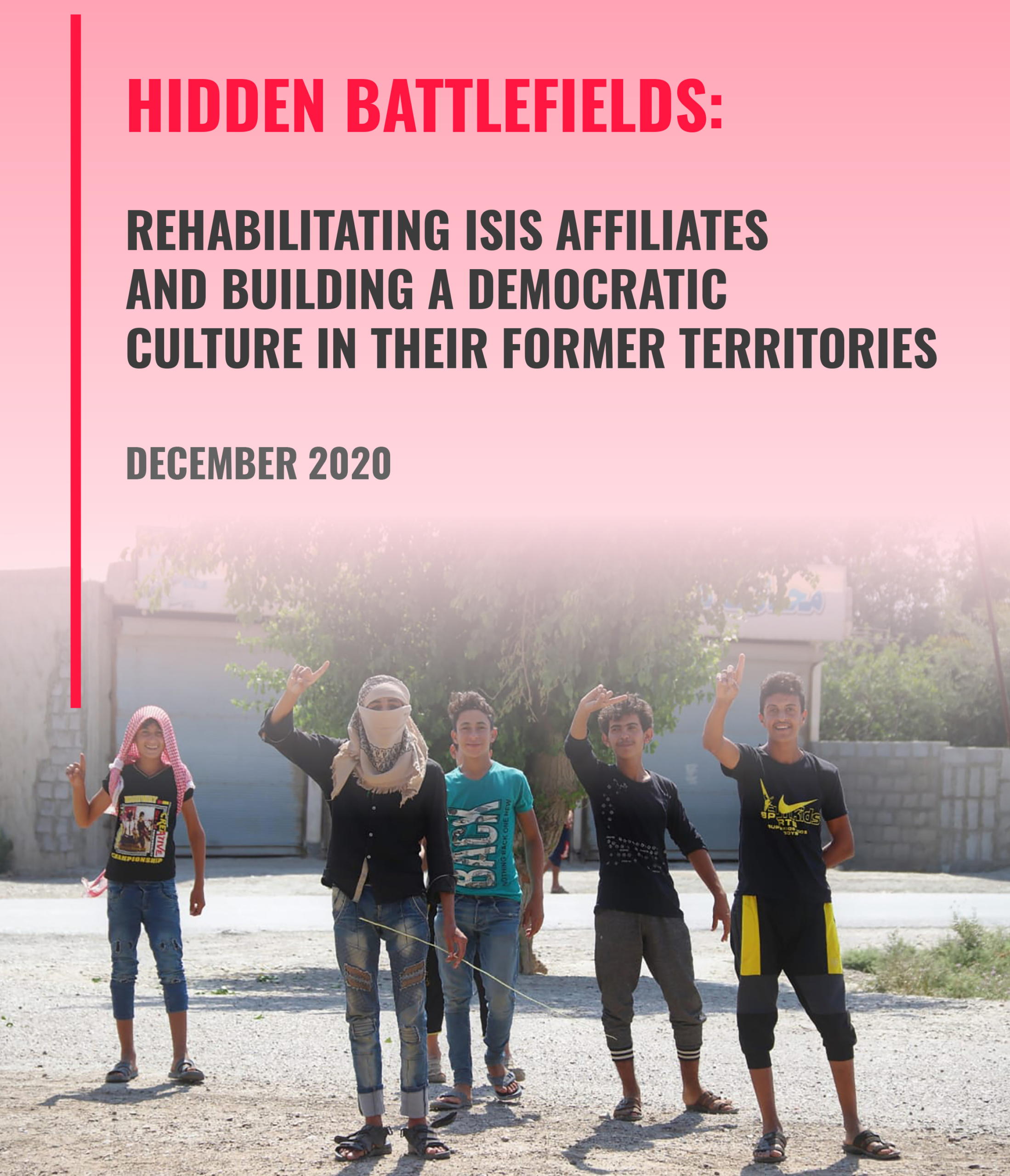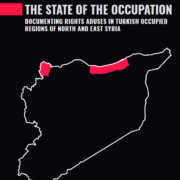April Sleeper Cell Report – Coalition Strikes Continue In Turkish-Occupied Territories Against ISIS Leadership

SDF special forces Yekîneyên Antî Teror (YAT) and Iraqi Kurdistan-based Counter-Terrorism Group (CTG) during a briefing before their joint raid on April 8.
Key Points:
- 20 confirmed sleeper cell attacks in April, no change from March.
- 10 military personnel killed, 17 military personnel injured, three civilians injured in ISIS attacks.
- At least five ISIS members killed and 19 arrested in raids and strikes.
- ISIS leader Ibrahim Sheikh Musa killed in Coalition raid inside Turkish-occupied territory.
- Charity office burned and a woman stabbed in al-Hol camp.
- ISIS strongholds in government-held Syria put pressure on the Autonomous Administration.
- Turkey claims killing of top ISIS leader al-Qurayshi.
The month of April saw sleeper cell attacks largely focused on military targets (including Asayish and security forces) in areas of the Autonomous Administration, causing a significantly higher amount of military casualties than civilian casualties: 10 military personnel killed and 17 injured while three civilians were injured and none killed. Of the 20 confirmed attacks, 14 occurred in Deir ez-Zor region, two in or near Heseke (al-Hasaka), two in Raqqa, and two in al-Hol camp. ISIS reinforced its efforts to impose taxation on oil in Deir ez-Zor region, with gunmen blocking oil trucks and contractors and forcing them to pay zakat (taxes). The SDF subsequently launched raids in response. In Deir ez-Zor, this practice has become more frequent since February as ISIS attempts to sustain its stream of revenue from the region. An ISIS leader was found to have infiltrated a local commune in Deir ez-Zor, and was subsequently arrested.
During SDF and Coalition raids and strikes in April, five members of ISIS were confirmed killed and 19 were arrested. On April 8, a raid on an ISIS sleeper cell in Markada was conducted with joint cooperation between the Anti-Terror Units (YAT), Counter-Terrorism Group (CTG), and Coalition. Four ISIS members were captured along with their belongings, including weapons and equipment. SDF Press stated on the operation: “The units and their partner forces raided the hideouts of the cell members in the town of Markada, south of al-Hasaka, arrested them, and confiscated a number of weapons, technical equipment, communication devices […] and documents proofing (sic) their relations and association with ISIS.” This raid exhibits a pattern of ongoing anti-ISIS cooperation between the SDF and CTG of Iraqi Kurdistan, which is affiliated with the Patriotic Union of Kurdistan (PUK). At least 15 others were arrested in a subsequent series of SDF and Coalition raids ranging from Raqqa to Deir ez-Zor, including ISIS commander Hudayfah al-Yemeni. In Raqqa, a farm formerly belonging to ISIS leader Abu Bakr al-Baghdadi was raided and found to have barrels of gold, weapons, and explosives in hidden rooms.
On April 17, US forces launched a raid in the Turkish-occupied village of Suwayda which led to the killing of ISIS leader Ibrahim Sheikh Musa (also known as Abd al-Hadi Mahmud al-Haji Ali) and two members of the Turkish-backed militia Suquor al-Shamal. According to local accounts, Musa was able to escape twice before being killed. Musa appears to have enjoyed refuge from Turkish-backed forces in the village of Suwayda, where Suquor al-Shamal is the prevalent force. The Coalition falsely claimed that it had killed two other ISIS members, when in fact they were confirmed members of Suquor al-Shamal. This raid marks the fourth confirmed Coalition attack on ISIS targets in Turkish-occupied areas in the past year, not including raids in undisclosed locations that may have also occurred in Turkish-occupied areas.
On April 30, Turkish President Erdogan claimed that Turkish intelligence forces had killed ISIS leader Abu al-Hussein al-Husseini al-Qurayshi in Turkish-occupied Jinderes, Afrin region. This claim was rebutted by an unnamed US government official, who told al-Monitor: “We are unable to confirm this. Furthermore, we have no information that would support this claim.” Head of SDF Media Center Farhad Shami tweeted:
“In fact, the ISIS figure Abu Husin al-Quraishi that Erdogan referred to his killing, was stationed in a military post belonging to the Turkish-backed Ahrar al-Sharqiya mercenary group and was killed in Jindires, Afrin. There is nothing new about this incident except for the end of a mission of an ISIS member that had long been protected by Turkish intelligence in occupied #Afrin.” RIC found no evidence corroborating the death of the ISIS leader nor of the supposed Turkish intelligence raid in Jinderes.

Al-Hol, August 2022. (Photo: Delil Souleiman)
Suspected ISIS attacks continued in al-Hol camp with the burning of a charity office and the stabbing of a woman. On April 5, the office of an unidentified charity organization was reportedly set on fire in the camp by suspected members of ISIS, causing material damage. Duaa Ismail, a 27-year-old woman from Aleppo, was stabbed five times with a knife and critically injured in the attack by a “masked young man, who is believed to belong to ISIS,” according to SOHR. According to a unnamed sources from SOHR, a child in the camp was killed by an SDF guard. This could not be independently verified.
On Wednesday April 19, 22 prisoners, many of them affiliated with ISIS, were released from Raqqa Central Prison for maintaining good behavior. Jails with ISIS prisoners remain overcrowded and continue to carry the burden of nearly 10,000 prisoners that have not yet been repatriated by their home countries. Though momentum is slow, some foreign efforts to repatriate ISIS prisoners continued in April. Canada repatriated four women and 10 children from the camps. CENTCOM released a statement welcoming the efforts, including that of Norway in late March.
Pressure on the Autonomous Administration emerges from intensifying attacks in central Syria, where ISIS has launched a series of organized attacks such as the killing of at least 31 truffle hunters on April 16. As government forces and Wagner Group mercenaries struggle to suppress ISIS cells around Jabal Rujm al-Mamlahah and Jabal Sab in Homs region, this ISIS stronghold in central Syria yields a potential outlet for attacks across the Euphrates in areas held by the Autonomous Administration, creating renewed challenges for overcrowded camps and detention facilities. This pressure is also felt south of the Euphrates in government-held Deir ez-Zor, where ISIS launched deadly attacks at a higher intensity and frequency than in SDF-held Deir ez-Zor in April.







